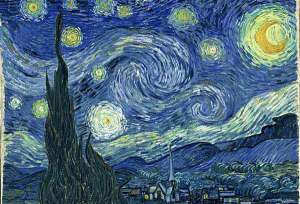Personally I think there is no correct way of defining the creative personality. If every creative person shared the same personality traits, it would to a certain extent challenge individuality. If you were asked to imagine a creative person, many would probably reflect on the classic image of a temperamental, passionate, outsider who may have been misunderstood many times in life. The truth is that there are many creative people who would not consist of even one of those qualities listed. In trying to understand the creative personality, Csikszentmihalyi identifies what he believes to be the 10 atributes of a creative person. Personally there are many traits I see in myself but also many traits I see in family and friends who are not what you may call creative people.
I believe that the most important trait of the creative individual is to alternate between imagination and reality. If you think with an open mind and have a good imagination, I believe that you have what it takes to be creative. When creating something new, your imagination is the main tool and you sense of reality is what makes your design understandable to the rest of the world. I also believe that passion, which describes an intense emotion compelling feeling, enthusiasm or desire for something is a key component when being creative. A passion to create, passion to learn and a passion to make your designs noticed by society. It doesn’t matter whether you’re playful or disciplined, rebellious or independent. Without passion and imagination, I believe you have lost the key components to being creative.
Csikszentmihalyi also believes that a person has a better chance of being creative with having access to a domain, access to a field or being born with a genetic predisposition (Csikszentmihalyi, M. 1996). When talking about genetic predispositions he refers to advantages with colour and light, due to vision impairments. In more recent times there has been interest surrounding Van Gogh’s vision and how it affected his art work. Some say it may have been lead poising that caused him to see light in circles around objects, others say that it was caused from his medication taken for lobe epilepsy. This particular drug can cause visual disturbances, such as seeing in yellow or yellow spots. This may explain the influence of circles and use of yellows in Van Gogh’s later work (Van Gogh’s Vision, 2011).
As most people are not born with these genetic predispositions, your creative opportunities become very depended on your access to a domain (school, uni etc) and field (experts in society who recognise your innovation). While the domain is of great importance, it is the field that will either make you renowned or unrecognized. During Van Gogh’s life he was nowhere near as popular as he became after his death. In his life he only sold one painting for 400 Francs, then in 1990, decades after his death his painting ‘Portrait of Dr Gachet,’ sold for an unbelievable $82,500,000 (Vincent Van Gogh Paintings, 2011). As his talent become highly recognized by few experts, his popularity grew all across the world.
In conclusion, I believe that like Van Gogh, a creative person needs passion and imagination, but also access to a field so their achievements can be enjoyed during their lifetime, instead of decades after their death!
References
Csikszentmihalyi, M. (1996). The Creative Personality. Creativity: Flow and the psychology of discovery and invention (pp. 51-76). New York: HarperCollins
Van Gogh’s Vision. (2011). Retrieved March 3, 2011 from http://blog.vangoghgallery.com/index.php/2008/06/06/van-goghs-vision/
Vincent Van Gogh Paintings. (2011). Retrieved March 28, 2011 from http://www.vangoghpaintings.net/portrait-of-dr-gachet/
Image
Vincent Van Gogh. (1889). Starry Night. Retrieved March 28, 2011 from http://www.vangoghgallery.com/catalog/Painting/508/Starry-Night.html

